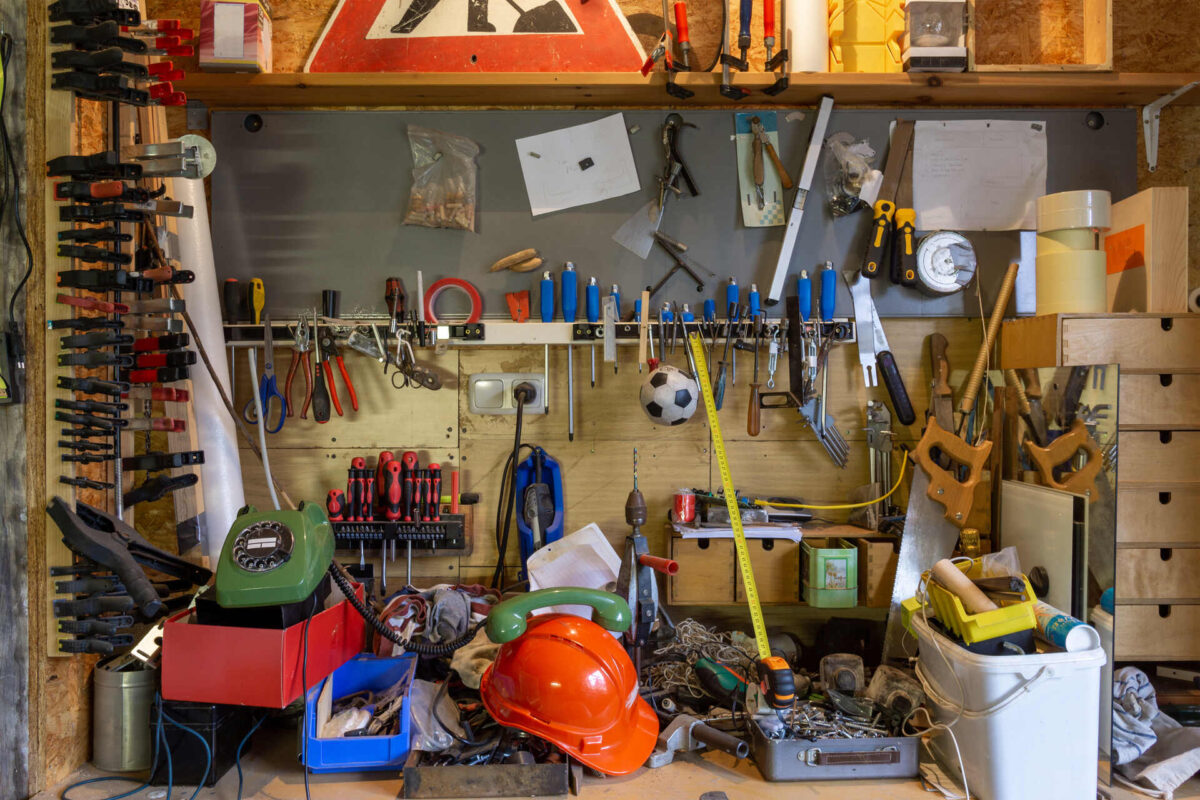If you want to relocate your gazebo, start by assessing the situation – can your new place accommodate it? If you decide to transport it, start by gathering the necessary tools and supplies for packing. Create a detailed plan of action and enlist the help of friends or family. You’ll need to disassemble the gazebo so that you can pack and label the pieces. If you’re not sure you are up for the task, consider hiring movers and getting some packing assistance.
Step-By-Step Guide: How to Move a Gazebo Safely to a New Location
Relocating gazebos can seem like a monumental task, but with careful planning and the right approach, it’s entirely feasible. Our comprehensive step-by-step guide on how to move a gazebo will help you navigate this process, covering everything from the initial assessment to the final stages of reassembly. Whether you’re a DIY enthusiast or considering professional help, these insights will ensure your gazebo’s journey to its new location is smooth and safe.


Start by Assessing the Situation
When deciding whether or not to relocate your gazebo to your new home, it’s crucial to start by thoroughly assessing the situation. Ask yourself, is it an integral part of your outdoor living space? Does it hold sentimental value? What would be the costs associated with leaving it behind versus shipping it?
You’ll also need to consider the practicality of the relocation. Is it designed to be portable, or is it a permanent structure? Is it made of a material that can withstand disassembly and reassembly? By answering these questions, you’ll begin to get a clearer picture of whether transporting is the right choice.
Evaluate the Condition of the Gazebo and Determine if It Is Suitable for Relocation
The next step is to closely evaluate the gazebo’s current condition. Look for any signs of wear and tear, structural damage, or issues that might affect its stability during transit. Inspect the gazebo foundation, supports, roofing, and other components. Consider bringing in a professional to ensure a thorough evaluation before relocating to a new state.
Remember, a gazebo that appears solidly built may have hidden structural weaknesses that could cause problems during shipping. If it’s in poor condition, it might be more cost-effective to leave it behind and invest in a new one after relocating to a new house.
Consider the New Location’s Suitability
Lastly, carefully consider the suitability of the gazebo in your new location. Check for sufficient space and a suitable foundation to ensure it can be safely and securely installed. Think about the gazebo’s orientation in relation to sunlight, wind direction, and other environmental factors.
Check local regulations to see if there are any restrictions on installing gazebos. Moreover, consider the aesthetic aspect – will the gazebo’s design complement your new outdoor space? By taking these factors into account, you’ll be better equipped to make an informed decision about relocating it.


Gather the Necessary Tools and Materials
Whether you’re wondering how to move a pergola or a gazebo, know that the process requires preparation and the right tools and materials. This not only ensures a safer and smoother relocation process but also helps avoid common relocation mistakes. To start, you’ll need a set of basic tools for disassembly. This usually includes screwdrivers and wrenches of various sizes to remove bolts and screws. A ladder will be crucial for reaching the gazebo’s roof. In addition, a rubber mallet can be useful for loosening tight parts without causing damage.
Packaging materials are also essential to protect the disassembled parts during transport. Use furniture blankets or bubble wrap for fragile pieces and tarps for larger sections. Strong ropes and bungee cords will secure parts during transit, while a roll of duct tape and some zip ties can come in handy for fastening wraps and covers. Remember to have a system for keeping track of all hardware (like screws, nuts, and bolts) removed during disassembly. Small, sealable plastic bags work well for this.
Ensure That You Have Access to Suitable Transportation
Transporting gazebos requires a vehicle that can handle large, potentially awkwardly shaped loads. A flatbed truck or trailer is often the best choice as they provide plenty of space and are easy to load and unload. Make sure to check the weight capacity of your vehicle to ensure it can safely carry it. Keep in mind that you might need to make multiple trips if your gazebo is particularly large or if your vehicle isn’t big enough to accommodate all parts at once.


How to Move a Gazebo – Make a Detailed Plan
Relocating to a new state requires a well-thought-out plan. This plan will serve as your roadmap, guiding you through each step of the process to ensure nothing is overlooked. You can even make a to-do list of the tasks related to relocating the gazebo. To start, evaluate the gazebo’s size, structure, and design. Take note of the different components, how they’re assembled, and the materials used. You’ll also want to consider any potential challenges you might encounter, such as the need for special tools or the presence of fragile parts.
Measure the Gazebo’s Dimensions and Compare Them to the New Location
Next, it’s crucial to measure the dimensions of the gazebo accurately. Note the height, width, and depth, and remember to include any overhanging features such as eaves or decorations. Also, measure the size of the gazebo’s individual components, as you’ll need to know their dimensions when planning for transportation and reassembly.
Compare these measurements to those of the new location where you plan to install the gazebo once you unpack after the relocation. Check if the ground area is ample and suitable and if there’s enough clearance around and above the spot for the gazebo to fit comfortably. It’s crucial to ensure that the new site can accommodate it without any modifications.

Storage
Cross Country Moving Company is the most trusted name in auto industry in the country.

Auto Transport
Cross Country Moving Company is the most trusted name in auto industry in the country.
Moving Insurance
Cross Country Moving Company is the most trusted name in the relocation industry in the country.
Create a Detailed Plan for Disassembling, Transporting, and Reassembling
With the measurements and analysis complete, you can now create a plan for disassembling, transporting, and reassembling. Start by sketching a rough diagram of your gazebo and labeling the parts. This will not only help you during the disassembly process but will also be invaluable when it’s time to put everything back together.
Plan out the sequence of disassembly, starting from the top down. Remove the roof first, then work your way down to the walls and base. Keep track of all hardware, grouping them according to where they’re used. This will make reassembly much easier. Once disassembled, organize the parts for transportation.
Pack them carefully, protect fragile elements, and ensure nothing can shift during transit. Upon arrival at the new location, follow the disassembly steps in reverse order to reassemble it. However, before doing so, make sure the new spot is prepared and level to ensure the gazebo sits properly.
Enlist the Help of Friends or Family Members During the Move
Relocating is a significant task that shouldn’t be undertaken alone. In this case, it’s essential to enlist the help of friends or family members. Having extra hands can make the process faster and your relocation more efficient and safer. Besides, tasks like lifting heavy components or securing parts during transit are easier and safer with more people.
When asking for help, make sure to clearly communicate the plan you’ve prepared. This ensures that everyone involved understands their role in the process, resulting in a smoother and more successful relocation. Be sure to reward their hard work with gratitude, maybe a nice meal, or return the favor when they need help.


How to Properly Disassemble the Gazebo
So, how to move a wooden gazebo? You’ll have to disassemble it, of course. Before starting the disassembly, take detailed photographs or videos of the gazebo from various angles. This will give you a reference point during the reassembly process, especially if there are intricate details that need to be replicated. Capture the overall structure and individual elements, including the base, walls, and roof. Don’t forget to include close-ups of the joints and connections. This step might seem unnecessary, but it can save you a lot of time later.
Next, remove any accessories, such as screens, curtains, lights, or decorations. These items can be delicate and may be damaged if left on during disassembly or transport. Be careful to retain any specific fixtures or fittings for these accessories, as they may be unique to the design. Once removed, pack these items separately to prevent damage.
Label and Organize the Components
After the accessories are removed, it’s time to start disassembling the gazebo’s main parts. As you take each piece apart, label them using masking tape and a marker. You can refer to the photos taken earlier to create a numbering system that correlates to their position. For example, ‘R1’ could denote ‘Roof Panel 1’, and ‘W2’ could be for ‘Wall Panel 2’.
Also, don’t forget to keep track of all the hardware – screws, nuts, bolts, and other small parts – using sealable bags. Label each bag according to where its contents were used. Remember, the goal during disassembly is to keep everything as organized as possible. This will make the reassembly process at your new location much more manageable.


Hire Professionals, and You Won’t Have to Worry About a Thing
Relocating to another state can be a daunting task, especially when it comes to the logistical challenges involved. When gazebos are a part of your household inventory, the complexities increase even more. Hiring cross-country movers can alleviate these challenges and provide you with peace of mind. Here are a few benefits of relocating with a cross-country moving service:
- Efficiency and speed – Professional movers have the experience and expertise to handle moves quickly and efficiently. They know the best practices for packing, loading, and unloading items to minimize the risk of damage.
- Safety and security – Professional movers are trained to handle items safely, reducing the risk of injury. They also offer insurance options, providing financial protection for your belongings during transit.
- Equipment and resources – Professional cross-country moving companies have all the necessary equipment, from large trucks to specialized packing materials, ensuring that your items are transported safely.
- Stress reduction – Perhaps the most significant advantage is the reduction in relocation stress. Relocating can be an emotionally draining experience, and the logistics can add to this stress. Hiring professionals allows you to focus on settling into your new home while they take care of the heavy lifting.
- Time savings – When you hire professionals, you free up a significant amount of time you can spend on other aspects of the relocation process, such as changing your address, transferring utilities, or saying your goodbyes.
Reach Out to Our Cross Country Moving Company for Help With Shipping
Relocating when moving cross country can be an incredibly challenging task, but it doesn’t have to be when you partner with the right experts. At Cross Country Moving Company, we have the experience, skills, and resources to ensure that your gazebos – along with all your other precious belongings – arrive at your new home safe and sound. Our long-distance movers recognize the value and sentiment attached to your belongings, and that’s why we offer tailored long-distance moving services to meet your unique needs.
Our vast fleet of relocation trucks ensures that we can accommodate gazebos of all sizes and shapes. Furthermore, our long-distance moving company can provide all the necessary packing materials and equipment needed to safeguard your items during transit. With us, you can rest assured that every aspect of your move will be handled with utmost care and precision. Contact us to get a free quote for our stellar cross-country moving services!
FAQ
How Long Does It Take to Move a Gazebo?
The time it takes varies depending on several factors, including its size, complexity, and distance to the new location. Disassembling could take a few hours to a whole day, while transportation and reassembly times are largely dependent on the distance and complexity, respectively.
Do I Need Any Special Permits to Move a Gazebo?
Permit requirements depend on local regulations. In most cases, relocating gazebos within your property doesn’t require a permit. However, when relocating to a new place, you may need a permit depending on the regulations in your new location, especially if it is large or if the relocation involves public roads. Always check with local authorities.
Can I Move a Gazebo by Myself, or Do I Need Assistance?
While it’s possible to relocate a small, lightweight one by yourself, most gazebos require at least two people for safe disassembly and reassembly. For large or complex structures, hiring professional movers is highly recommended.
What Should I Do if My Gazebo Is Too Large to Transport in One Piece?
If it is too large to transport in one piece, it will need to be disassembled. If disassembly isn’t possible or you’re not comfortable doing it yourself, consider hiring professionals. They have the expertise and equipment to disassemble, transport, and reassemble gazebos safely.
Can All Gazebos Be Disassembled for Relocation?
Not all gazebos are designed to be disassembled. Some are permanently installed and may be damaged if an attempt is made to dismantle them. It’s best to consult with a professional before attempting to disassemble yours.
What Happens if a Part of My Gazebo Gets Damaged During the Move?
If a part gets damaged during the transportation process, some professional relocation companies offer insurance options. This means you could be covered for the cost of repairing or replacing the damaged piece.
Can the Moving Company Help Reassemble the Gazebo at My New Home?
Most professional relocation companies, like Cross Country Moving Company, offer services that include reassembly of your items, including gazebos, at your new location.
What Precautions Should I Take When Moving a Gazebo?
Photograph each step during disassembly, label all parts, package small components securely, and protect the pieces with appropriate materials during transport. If you’re unsure how to do it yourself, consider hiring professionals.
How Much Does It Cost to Move a Gazebo?
The cost depends on various factors, such as the gazebo’s size and weight, the distance of the relocation, and whether professional movers are employed. It’s best to get a quote from a reliable cross-country relocation company.









